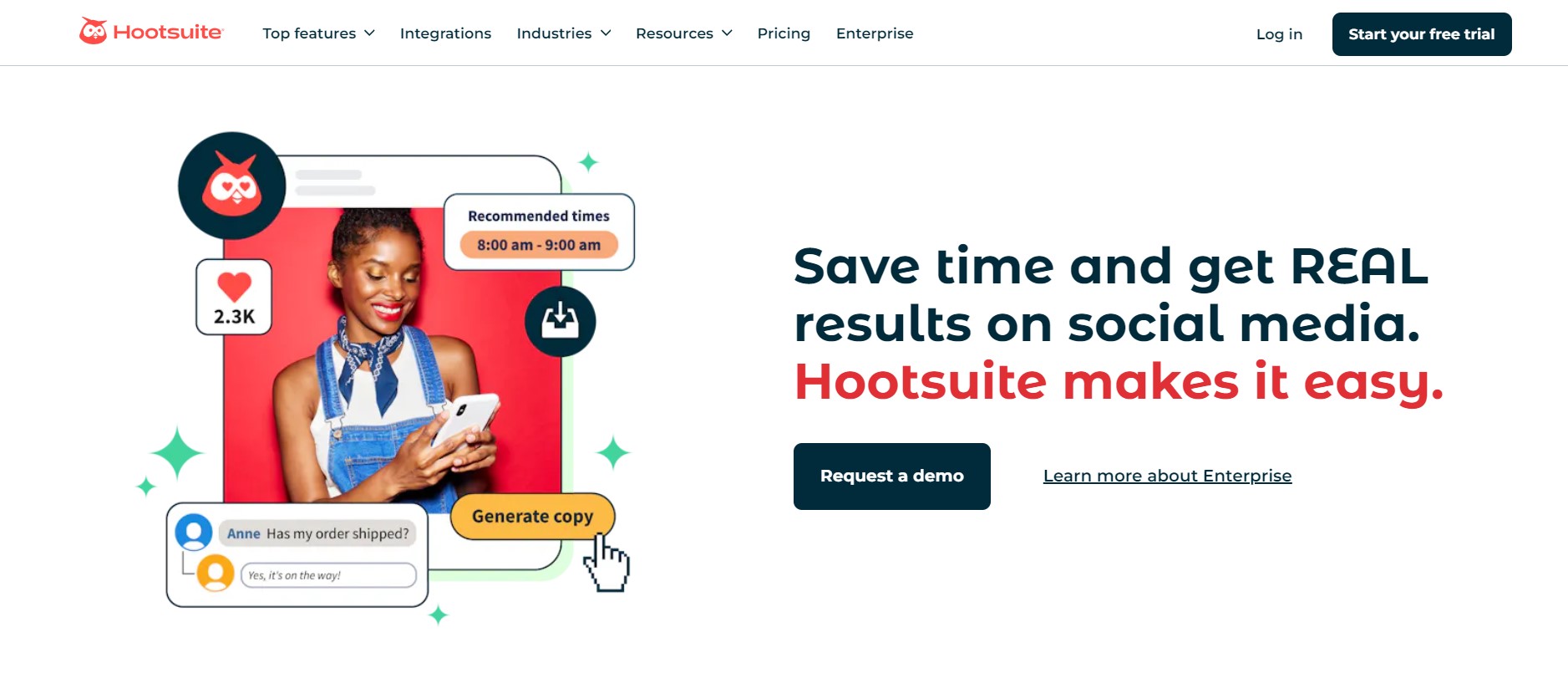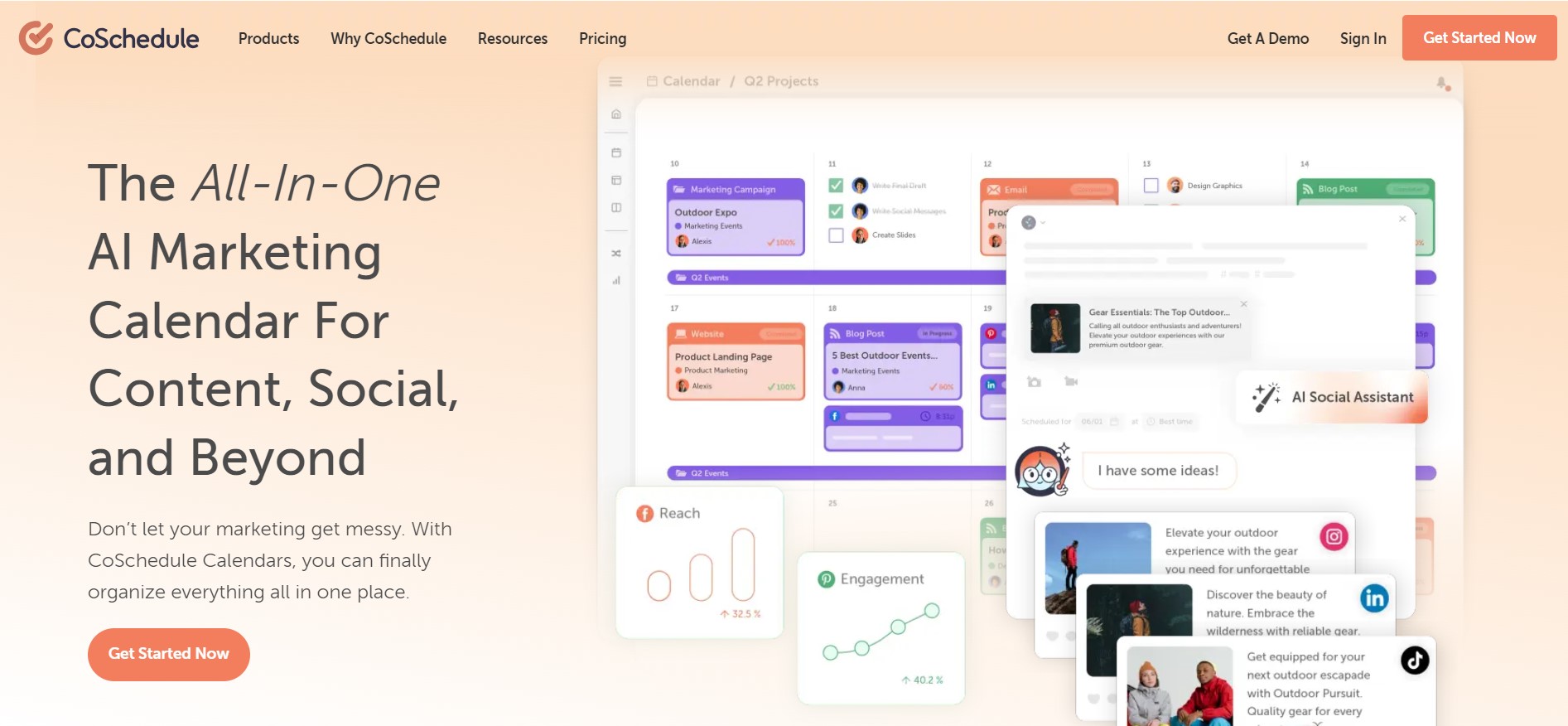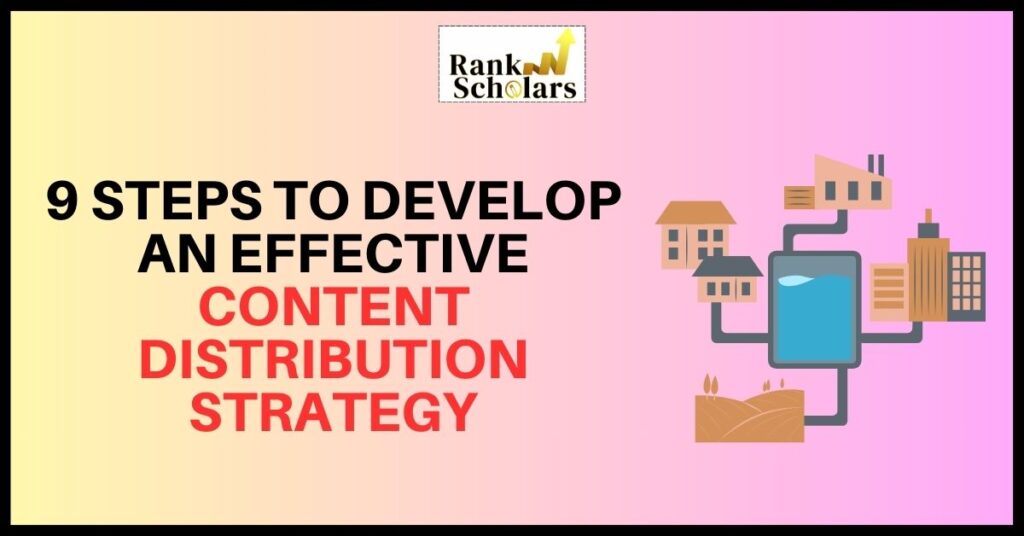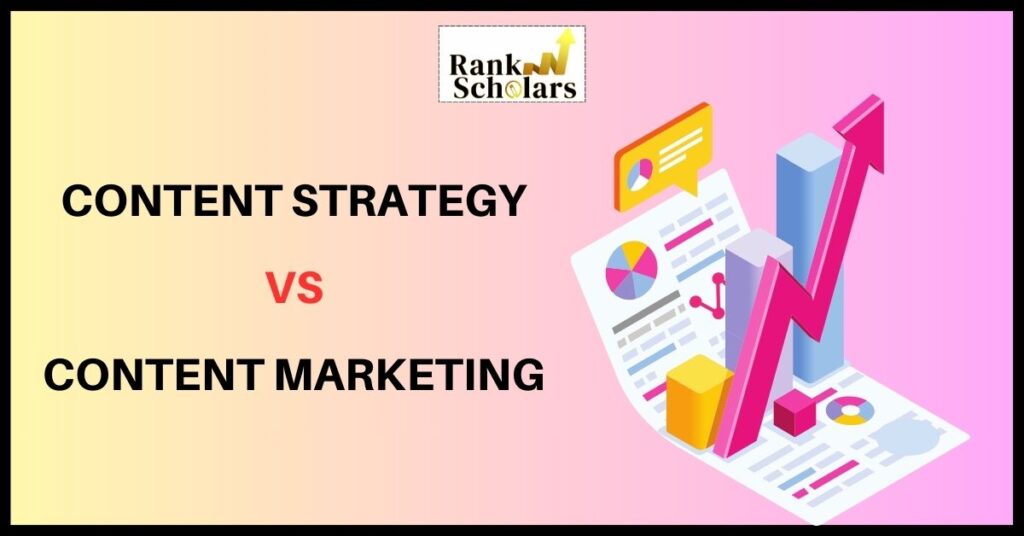Producing high-quality content is just the first step towards building a credible online presence for your company. It is equally important to ensure that your content reaches the right audience via the right distribution channels. Refining your content distribution strategy can make your content reach a broader set of audience and better your ROI.
This article will cover what is content distribution, why it is important, what are the types of content distribution and how to refine your content distribution strategy.
What is Content Distribution?
Content Distribution refers to the process of sharing and distributing digital content to maximize its reach, engagement and enhance visibility via various platforms and channels.
Content distribution involves sharing content across various channels such as owned websites, social media channels, and paid media. The main goal for content distribution is to reach as many people as possible and ensure that your content reaches your target audience group.
Why is Content Distribution Important?
Content Distribution is important for several reasons as it ensures that your content reaches the right audience and maximizes its impact. Content Distribution supports your business goals and helps in increasing visibility. Following are some reasons why content distribution is important.
Enhanced Visibility
Effective content distribution enhances visibility as it reaches a wider set of audience. It helps in increasing engagement and better SEO. By distributing content across various platforms such as social media, email newsletters, and blogs, businesses can reach different audience segments.
With the consistent use of highly targeted keywords, your content can rank higher on SERPs, making it easier for people to locate your business.
Better Audience Engagement
Distributing content in various forms like social media posts, email newsletters, and blog posts allows your content to reach people where they are most active. It ensures that your message resonates with audiences on different platforms.
This diverse and dynamic approach would let the audience engage with your content more in the form of likes, comments, and shares and keep them updated and engaged with your brand.
Increased Brand Awareness
By consistently sharing your content across various channels, it ensures to reach a wider set of audience which in turn makes them aware of your brand and effectively gets your message across.
With quality and relevant content posted across your social media channels and website, recognition, familiarity, and trust are built among the potential customers in turn making your website more credible.
SEO And Organic Traffic
Promoting and distributing your content on various channels would increase your visibility which leads to higher engagement and more shares. Content distribution helps in improving SEO and organic traffic by generating backlinks from reputable websites and bettering SERPs.
Consistent and relevant usage of keywords throughout your content can increase the chances of people finding your content organically and generate more leads.
Better Lead Generation And Conversions
By strategically distributing content in various channels, you can reach a wider set of audience. Reaching the potential customers on the platform where they spend most of their time attracts qualified leads.
Effective and consistent content distribution builds authority and credibility that helps keep the brand on top of your customer’s minds. It leads to higher conversion rates, as people are more likely to choose a brand that they are familiar with.
Competitive Advantage
Content distribution offers a competitive advantage by increasing your brand visibility. When your content is visible across various platforms, it has comparatively more chances of standing out in the crowded space.
The consistent posting of content builds stronger connections where your target audience is present. This dynamic approach will set you apart from your competitors.
Cost-Effective Method
Content Distribution is one of the most cost-effective methods that help in maximizing your content’s reach and visibility.
Repurposing your content on social media, email newsletters, and blog posts can let you reach a wider set of audience without any kind of paid advertising. Increased organic reach and better SEO can further your visibility and reach at very low expenses.
Builds Authority And Trust
By consistently providing informative, relevant, and valuable content across multiple channels brands can build trust and authority among their audience. When your content reaches the audience consistently, they picture you as an authoritative figure in the industry.
Sharing well-researched and informative content on your socials and website can reassure your audience of your reliability and expertise.
The 3 Main Types Of Content Distribution Channels
Content Distribution channels can be broadly divided into 3 main types: owned, earned, and paid. Each of the three has its own benefits and unique qualities, and together they form a comprehensive and effective content distribution strategy that betters your content efforts and maximizes the ROI.
Owned Channels
Owned channels are platforms owned by companies or brands, such as websites, blogs, email newsletters, and social media profiles. Multiple owned media channels result in a large digital footprint which ultimately leads to more traffic.
These channels allow you to directly reach your audience and tailor content according to their interests and preferences and also allow the owner to have complete control over content, timing, and presentations.
Owned channels are significant for driving organic traffic, direct consumer engagement, and creating a distinct brand identity. They serve as a base for all marketing efforts by providing a consistent platform to publish content without relying on any third-party websites.
Earned Channels
Earned channels include publicity gained through word-of-mouth, organic media coverage, reviews, and other forms of organic promotions. It is often considered as one of the most credible forms of content distribution and promotion as it comes from third parties.
With its high credibility and trustworthiness and its potential for significant reach and exposure, you can create shareable high-quality content that encourages social sharing, builds relationships with journalists, and encourages satisfied customers to leave credible reviews.
Paid Channels
Paid media includes channels that require payment to reach a broader set of audience. It may include traditional forms of advertising such as print media, and TV ads as well as search engine advertising, social media ads, display ads, and sponsored media.
Paid channels allow you to run targeted campaigns and measurable results allowing businesses to quickly scale their visibility, enhance engagement, and better their conversion rates. These channels are mainly used for launching new product lines, driving traffic, and completing specific marketing objectives.
How Can You Refine Your Content Distribution Strategy?
Refining your content distribution strategy involves several steps to ensure that your content reaches the right audience through the right channels and at the right time. By refining your content distribution strategy, you can meet the needs of your audience, maximize your engagement, and achieve your business goals.
Step 1: Choose Your Audience
Identifying and choosing your target audience is one of the most important tasks in refining your content distribution strategy. This can be done by defining the demographics, interests, and behaviors of your target audience.
Developing detailed buyer personas, specifying them based on age, location, occupation, inclinations, and their pain points will ensure that your content resonates with the right audience enhancing your conversion rates and generating more leads.
Step 2: Perform An Audit Of Your Existing Content
Performing an audit of your existing content is necessary to evaluate what content is performing well and what is not. This can be done with the help of analyzing metrics such as traffic, engagement, bounce rate, and conversion rates.
Identifying the segment which needs new content, or from where content can be repurposed into new formats would help you in utilizing the existing content and focusing on high-impact areas to improve content quality.
Step 3: Set Specific Goals
Setting precise goals to work on provides direction and benchmarks to work towards and helps in assessing the effectiveness of your content strategy. Use SMART (Specific, Measurable, Achievable, Relevant, Time-bound) to set precise targets and track the effectiveness of your strategy.
The goals that you set should be clear and aligned with your business objectives, such as increasing brand awareness, generating leads, or driving sales.
Step 4: Set Important KPIs To Measure
Identifying and setting key performance indicators can help you track the effectiveness and efficiency of your content strategy. Major KPIs include website traffic, engagement rates, lead generation, conversion rates, and return on investment (ROI).
Choosing KPIs that align with the goals and objectives of your business will provide you with insights into how well your content strategy is doing and what are the gap areas that need more consideration and focus.
Step 5: Pick Important Content Distribution Channels For Your Business
Selecting distribution channels that reach a wider set of audience is important to increase the engagement of your business. Select channels that best reach your target audience, such as social media platforms, blogs, or email newsletters.
Consider the platforms where your target audience spends most of their time but also try to diversify your channels to maximise your reach and impact. Use the unique strengths of every platform like, Instagram for visuals, LinkedIn for b2b information, and blogs for in-depth information.
Step 6: Determine The Type Of Content
Choosing the type of content that resonates with your audience and directly addresses their pain points is important to keep the audience engaged, aligns with your business’s goals, and builds your credibility among them.
To keep the audience occupied and engaged with your content, you need to balance the content between keeping it entertaining, informative, and promotional. Tailoring your content to different platforms and their strengths will also help you cater to different types of audiences.
Step 7: Schedule Publication Deadlines
Creating a content schedule would help you in planning where and when to publish your content. Setting proper deadlines for content creation, editing, and distribution. Ensure that you post consistently and in a manner that aligns with your brand objectives and the platform’s algorithm.
Scheduling your content and publications in advance will allow you to have a better resource allocation and would reduce any last-minute rushes, ensuring a high-quality content delivery for your audience.
Step 8: Execute Your Plan
Executing your content plan effectively by producing and distributing content according to your schedule is an important step. Coordinate with your team and ensure that the content that is being published is aligned with your content schedule.
Various social media management tools and CMS platforms can be used for efficient management and publishing of your content. Consistent management and publishing of your content will build an audience and keep them engaged.
Step 9: Track Results (Leverage A/B Testing)
Monitoring the performance of your content is important to know about the efficiency of your content strategy. Conduct A/B testing to compare different versions of your content and get to know about what goes best with your audience.
Track metrics like CTRs, conversions, and engagements using analytical tools and use the given insights to identify gap areas and tailor your content according to the data. This will ensure that your content is effective and impactful.
Step 10: Optimize Your Strategy To Get More ROI
The data-driven insights that you have gained from tracking the performance can be used to optimize your strategy to get a better return on investment. Adjust the elements like topics, formats, and channels according to the data.
Focus on high-performing areas and try reducing or eliminating the underperforming ones to get better results from your content and ensure that your content delivers maximum returns on investment.
Step 11: Repurpose And Optimize Existing Content
The value of your content that is already published can be maximized by repurposing it into different formats or updating it with new information available. You can turn an already posed blog into a video, an infographic, or even a LI post.
Update the outdated content with fresh insights and data. Repurposing your content will expand its lifespan and will help in reaching a new and wider set of audience. This will also enhance your content efficiency and provide value to your audience.
How To Balance Multiple Content Distribution Goals?
To achieve sustainable growth and engagement, it is important to maintain a strategic approach and effectively balance multiple content distribution goals. Following are 7 steps to balance multiple content distribution goals.
Define Clear Objective
Defining clear objectives is one of the most important tasks in balancing your content distribution goals, whether it’s increasing brand visibility or increasing engagement. Clearly outlining your content distribution goals would help you in mapping out a content strategy to fulfill them.
Prioritize Goals
Prioritizing goals based on their importance would help you in aligning them according to your content strategy. Rank the goals based on their relevance to your current business and how they will impact your business.
Understand Audience Preferences
Understanding audience preferences is necessary to tailor your content strategies according to their preferences and inclinations. Analyze audience behaviors, preferences, and demographics and personalize content formats accordingly.
Allocate Resources Wisely
Allocating and distributing resources wisely is important to ensure that each goal receives adequate support and funds for successful execution. Distribute resources such as budget, time, and manpower according to the prioritized goals.
Monitor And Measure Performance
Monitoring and measuring the performance of your content distribution goals is important to judge the efficiency of your efforts. Use various analytic tools and key performance indicators (KPIs) to make data-driven decisions.
Optimize Across Channels
To maximize your reach and engagement, you should utilize a mix of channels, such as social media marketing, email marketing, SEO, etc. Tailor content according to each platform and maintain consistency in providing your audience with relevant content.
Adapt And Iterate
Staying up-to-date and responsive to changes in audience behavior, market trends, and competitor strategies will help you continuously refine your content distribution strategy and tactics based on performances and insights.
What Are The Most Popular Content Distribution Channels?
Content distribution channels include a variety of platforms and methods to maximize your reach and engagement. Some of the popular content distribution channels are as follows.
Social Media Platforms
Social media platforms have become one of the most popular channels for content distribution due to their widespread reach, easy accessibility, and their ability to facilitate engagement.
Each platform has its unique qualities. From visuals and photographs on Instagram to B2B content on LinkedIn, social media has emerged as powerful platforms that can cater to diverse demographics and make it easy for you to target a specific audience.
Email Marketing
Email marketing is a significant content distribution channel for businesses and plays a pivotal role in marketing strategies. Newsletters can prove to be an effective way to provide users with updates, articles, and promotions.
Targeted emails based on consumer preferences and inclinations can help you provide them with personalized recommendations maximising your reach and engagement and better your marketing ROIs.
Content Websites And Blogs
Content websites and blogs are some of the most significant channels for content distribution due to their easy accessibility, ability to reach audiences organically, and the authority and credibility they establish.
Company blogs are important to provide your target audience with in-depth articles, how-tos, and various other types of helpful content. Writing guest articles on other reputable websites can help you reach a broader audience and drive traffic back to your website.
Video Platforms
Video Platforms are significantly important for content distribution to reach a global audience and better your SEO. You can upload videos of larger lengths, video tutorials, product reviews, and even vlogs.
Along with wider engagement and reach, you can create narratives with the help of storytelling through their videos evoke emotions, and build connections with your audiences.
Podcasts
Podcasts have become one of the easiest and most important channels of content distribution due to their easy accessibility, monetizing opportunities, and convenience for the listeners.
Moreover, audio formats create a sense of personal connection with the listeners, which can lead to a higher degree of engagement as compared to written or visual content. And unlike any visual or written content, podcasts allow their listeners to multitask while consuming your content.
Search Engines And SEO
Search Engines and SEO are critical content distribution channels due to their high visibility and reach. Search engines being the primary source of web traffic can help you reach a broad and global set of audience with the help of effective SEO.
Creating content that is optimized and ranks high on search engine ranking pages can help you attract organic traffic to your website and help you generate more leads and increase your engagement.
Top Content Distribution Tools & Platforms To Skyrocket Your Efforts
Effective content distribution is important for maximizing your reach and engagement. With the help of content distribution tools and platforms, you can enhance your content distribution efforts and maximize your ROI. Following are some content distribution tools and platforms to help you skyrocket your efforts.
Hootsuite

Hootsuite is a social media management tool that allows you to schedule and manage posts across various social media platforms from a single dashboard. With its features like automation, scheduling, analytics, and performance tracking, Hootsuite is one of the best platforms for businesses and marketers to streamline their efforts.
Buffer

Buffer is another user-friendly platform to help you schedule posts, analyze performance, and manage all of your social media accounts from a single place. With custom scheduling for every application, social media analytic tools, and team collaborative tools, Buffer gives content marketers an easy way to manage all their social media accounts.
Mailchimp

Mailchimp is one of the most popular email marketing platforms that helps you create and distribute email campaigns to your target audience. With drag-and-drop email builder, audience segmentation, detailed analytics reporting, and automation, Mailchimp allows brands to engage their audience through targeted email campaigns.
CoSchedule

CoSchedule is a marketing calendar that is designed to help you organize and optimize your content marketing efforts. With features like an integrated marketing calendar, content scheduling and automation, social media promotion, and collaboration tools, CoSchedule works best for people who need an organized approach to managing their content and campaigns.
HubSpot

HubSpot is a popular all-in-one marketing platform that offers tools for content management, social media, email marketing, and more. With an effective content management system (CMS), email marketing and automation, social media management, and performance tracking tools, HubSpot is a comprehensive solution for inbound marketing efforts.
Canva

Canva is a graphic designing tool that allows you to create visually appealing content for social media, blogs, and even emails. Canva’s easy-to-use design interface, thousands of templates, and design elements allow marketers and content creators to enhance their visual content without needing any advanced skills in designing.
Final Words
Content distribution is important to maximize the reach of your content and ensure that it reaches your target audience on the platform of their own choice and inclination. Refining your content distribution strategy is an ongoing process that requires continuous analysis of market trends and tracking of the performance of your current strategy to identify the gap areas. By implementing the steps for how to refine your content distribution strategy mentioned in this article, you can increase your content’s reach and drive your brand toward better ROIs.

Anubhuti is a freelance writer who crafts engaging content. Running on a single cup of coffee, on most days, she prefers books and music over people and loves creating compelling content for you!



